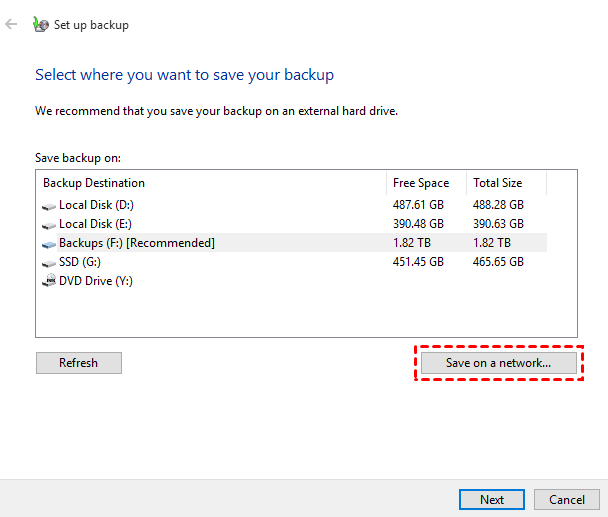

- #SYNOLOGY AUTOMATIC BACKUP WINDOWS 10 PRO#
- #SYNOLOGY AUTOMATIC BACKUP WINDOWS 10 WINDOWS 8#
- #SYNOLOGY AUTOMATIC BACKUP WINDOWS 10 MAC#
To synchronize the srcdir and backup directories, type: Using Grsync, you can easily backup, transfer, synchronize files and folders within the local system or between a local and remote systems. 2 Creating an Rsync backup job on the local ASUSTOR NAS. Especially the fact it only backs up (what is called) Libraries is kinda odd and might not be easily understandable by the average user.Freepbx rsync backup. You could be sure to always have proper backups in place.įile History comes very close to such a system although I found its setup and configuration a little more cumbersome. I configured it, connected it to an external storage and simply forgot about it.
#SYNOLOGY AUTOMATIC BACKUP WINDOWS 10 MAC#
When I bought a Mac years ago, one of my favorite features was Timemachine. Usually you had to rely on some third party applications which you had to configure. Adding your folder to an existing library is as easy as to right-click on the folder and then select “Include in library” and choose a suitable one or click the “Create new library” button.įor a long time creating backups on Windows was a painful process. What you have to do is to either create a new library or add your folder to an existing one. But don’t be afraid, if you have other folders on your hard disk you’d like to backup which don’t reside inside one of the mentioned libraries, you can. To be honest I never really payed attention to the concept of “Libraries” till now. Windows File History backups your “Libraries”, that is To be sure check the contents of the shared folder you setup before on your disk station. You should now be prompted to enter your credentials.Īt this point you should have a working backup of your files.


Reboot your system and then open the “File History” window again.

Remove any credentials related to your Synology disk station. In that case you can reset the credentials that are used to connect to your Synology. If you previously connected with a different account, Windows might automatically use that one. Note, make sure you use the correct credentials, that is your backup account you previously created (if you did so). Once that is set up, you can simply click the “Turn on” button to enable File History. Click on “Select drive” to select the network location where you want to host your backup data. When you first configure it, you obviously won’t see anything there. The following image shows my currently working setup.
#SYNOLOGY AUTOMATIC BACKUP WINDOWS 10 WINDOWS 8#
The OSX Timemachine like service on Windows 8 is called File History. As mentioned before, this is suggested in order to limit the amount of space that can possibly be used by your backup.Ĭontinue till the end of the account creation wizard and apply your configuration. On the access rights page give it read/write access to the backup folder on your disk station. To create a backup account simply login to your Synology web interface, open the Control Panel and navigate to “User”. Obviously, if you don’t have such a requirement or for other “non-powerusers” in your network, you can also use the same account. Since you can only impose quotas at the account level I tend to create a different ones. I wouldn’t want to share the quota of that account with the one used for backups. For instance, I normally use an account “juri” to my disk station, for deploying files, videos, photos and so on. Note: This approach is useful for imposing different quota limits to the backup and your “usual” Synology account. I suggest you to configure a separate user account on your Synology NAS which is exclusively used for performing the backup. Now continue by creating a new backup user. Open the Control Panel on your Synology web interface and navigate to “Shared Folder”. Note, this folder can be used to backup multiple user/windows machines. Create a shared backup folderįirst of all, create a new shared folder that will be used as the container for your windows backups. Still, you may easily be able to apply similar steps to your system. I’m running a Synology disk station DS414j with DSM 5.1 installed on it. Here’s how I configured it to work with my Synology NAS (but you can easily adopt it for your NAS system). Now having my Surface I obviously wanted the same on my Windows machine. Once configured it silently runs in the background and makes sure you have everything backed up. That said, one of the things I liked about my Mac or better, about OSX is Timemachine.
#SYNOLOGY AUTOMATIC BACKUP WINDOWS 10 PRO#
At work I’m a PC user and lately I acquired a Surface Pro 3 as well. I love my Macbook Pro which I’ve been using now for about 6 years.


 0 kommentar(er)
0 kommentar(er)
